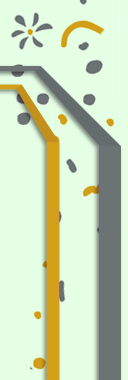1.Personal development
Dear visitor,
From my early childhood I was always busy with painting and drawing themes from nature. Nature is an inexhaustible source of inspiration. After following some painting- and etching courses, I started in 1981 with the Assendelft painting course at the Leidse Onderwijsinstelling (L.O.I.)
Assendelft painting is an authentique Dutch Folkart painting style, that finds its origin in the 17th century and formed additional employment for farmers and fishermen. The motives were found in their own environment, like flowers, birds, fruits and they were also inspired by scenes from the bible. The name Assendelft painting is related to a small village in the province of North- Holland in which area authentique painted objects were found and collected.These items you can nowadays be admired in some specific Dutch museums with a special interest in Dutch (folk) art and history.
After successfully finishing the course of Assendelft painting, I directly became a certified and fully authorized teacher in this painting style. This was officially authorized by the late Mr. Jacques Zuidema, who developed this course. After 1 year of teaching and using his official patterns and examples, I felt that I needed to move into a different direction. I started to enhance and develop new techniques and motives by my own hand, to create more freedom and more possibilities in my painting.
In 1990 and 2000 I was officially invited to introduce and teach my own style in Japan. I gave seminars in Tokyo, Nagoya, Osaka and Fukuoka. At the same time an exhibition of my work was held in Mitsukoshi Department Store in Nagoya. In Japan, as well as in America, Canada and Australia some part of the local decorative painting is based on authentic European styles. But also new techniques and new styles, developed and introduced by individual artists, were very popular during 'the Eighties' and became a big hype in these countries.
In the last 26 years, I gave and I still give, seminars and lectures in Holland, Belgium, France, Germany, Japan, New Zealand, Australia, Canada and nowadays also in Israël. In Israël decorative painting is very popular and there are a lot of good painters there. It is always good to meet friends all over the world and sharing the love for painting.
I am very grateful to my sons Jeroen and Francois and my husband Leo for their support. I especially want to thank my very dear friend Mrs. Sachico Ito from Nagoya in Japan. She has been my big anchor and guide , especially during my second stay in Japan.

